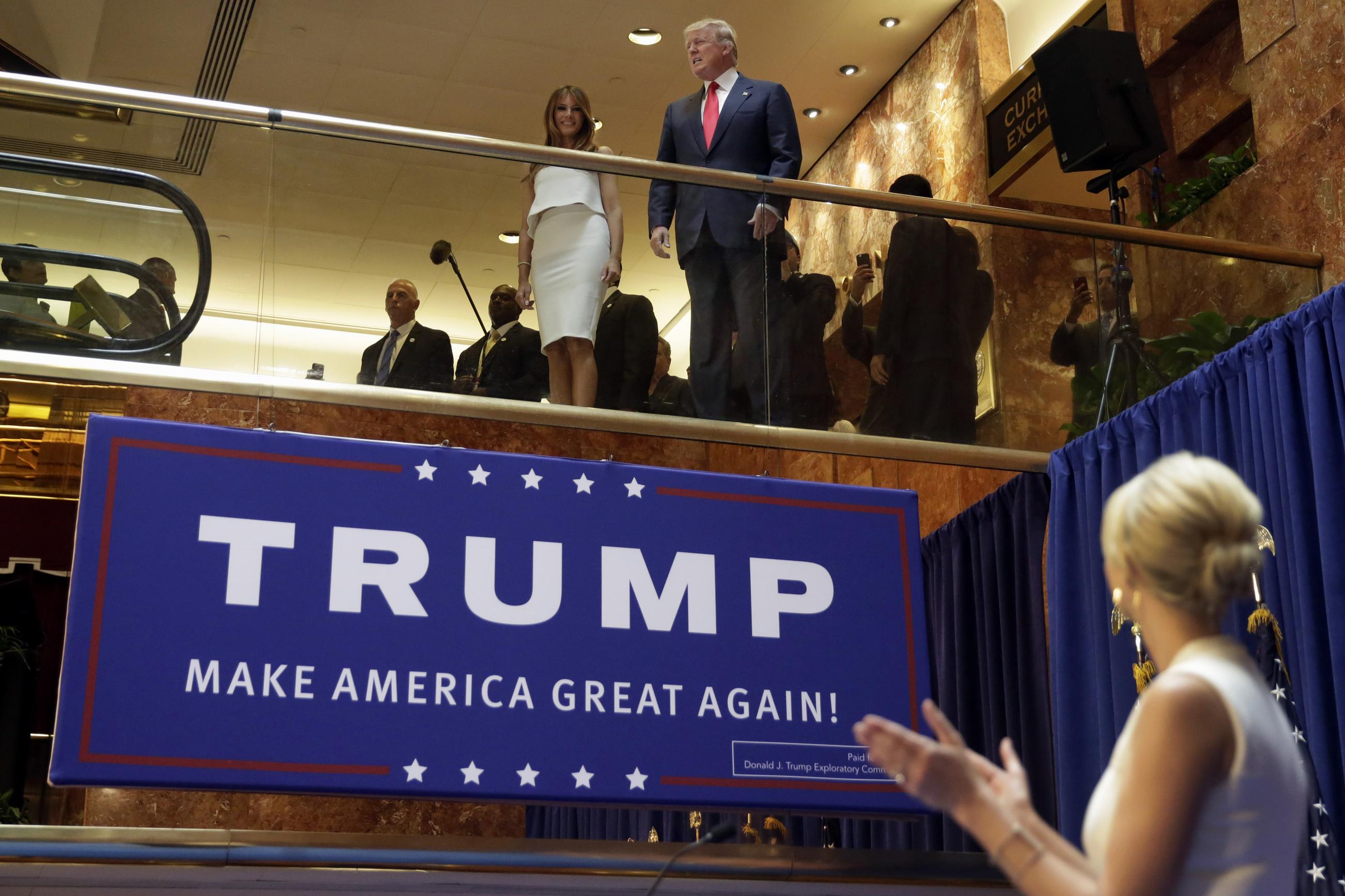FILE - In this Sunday, June 16, 2015, file photo, Donald Trump, accompanied by his wife Melania Trump, is applauded by his daughter Ivanka Trump, right as he's introduced before his announcement that he will run for president in the lobby of Trump Tower in New York. It was the escalator ride that would change history. Four years ago on Sunday, Donald Trump descended through the marble and brass atrium of Trump Tower to announce his candidacy for president. It was the first step on a journey few believed would take him all the way to the White House. (AP Photo/Richard Drew, File)


